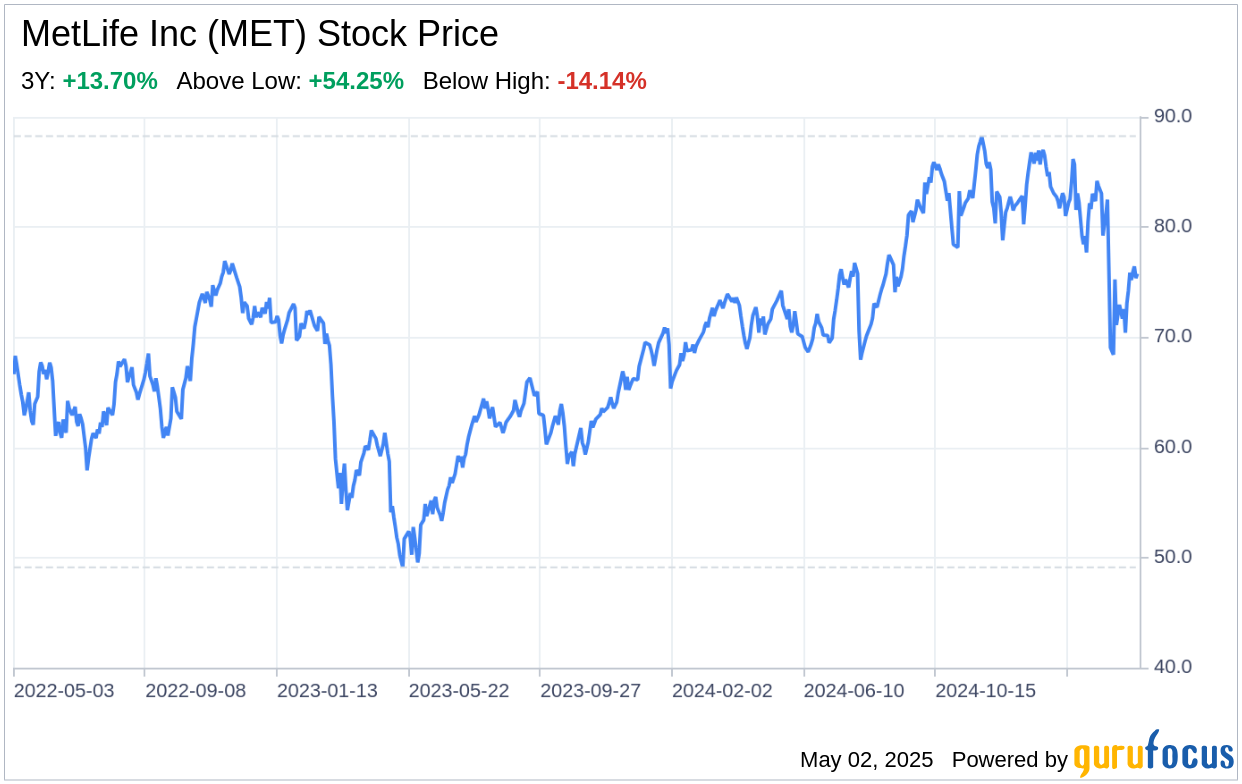On May 1, 2025, MetLife Inc, a leading life insurer in the United States, filed its 10-Q report, revealing significant financial developments. The company's premiums rose from $10,053 million in Q1 2024 to $11,723 million in Q1 2025, indicating a solid growth trajectory. Despite a slight dip in universal life and investment-type product policy fees, net investment income remained strong at $4,885 million, albeit a decrease from the previous year's $5,436 million. MetLife Inc's comprehensive income notably increased to $2,957 million from $338 million, reflecting a robust financial position. This SWOT analysis delves into the strengths, weaknesses, opportunities, and threats as presented in the latest SEC filings, providing investors with a comprehensive view of MetLife Inc's strategic market standing.

Strengths
Diversified Global Presence and Product Portfolio: MetLife Inc's strength lies in its extensive global footprint, with operations spanning across the US, Asia, Latin America, and EMEA regions. The US segment, contributing around 50% of earnings, is bolstered by the group benefits and retirement solutions segments. The Asia segment, contributing 22% of earnings, is driven by a strong presence in Japan and growing markets like India, China, and Bangladesh. This geographical and product diversification enables MetLife to mitigate risks associated with market volatility and regulatory changes in individual regions.
Financial Resilience: MetLife Inc's financial resilience is evident from its substantial comprehensive income growth, which soared to $2,957 million in Q1 2025 from $338 million in the same period the previous year. This increase reflects the company's ability to manage its investment portfolio effectively, despite the challenges posed by fluctuating interest rates and market conditions. The company's robust balance sheet, marked by a steady increase in net income available to common shareholders from $800 million to $879 million, underscores its financial stability and capacity to sustain profitability.
Weaknesses
Investment Income Volatility: While MetLife Inc's net investment income remains strong, there is a noticeable decrease from $5,436 million in Q1 2024 to $4,885 million in Q1 2025. This volatility in investment income could be attributed to the dynamic nature of financial markets and interest rate fluctuations, which pose a challenge to the company's investment strategy and could impact its long-term profitability.
Regulatory and Legal Risks: MetLife Inc operates in a highly regulated industry, and the company acknowledges a range of legal and regulatory risks that could potentially impact its operations. These include changes in tax laws, litigation, and regulatory investigations, which could result in increased compliance costs, penalties, or restrictions on business practices. The complexity of navigating different regulatory environments across its global operations adds to this challenge.
Opportunities
Strategic Acquisitions: MetLife Inc's pending acquisition of PineBridge Investments, a global asset manager, is set to enhance its investment management capabilities and expand its product offerings. This strategic move, expected to close in the second half of 2025, presents an opportunity for MetLife to bolster its position in the asset management space and diversify its revenue streams.
Market Expansion: The insurance industry is evolving with the rise of digital technologies and changing consumer preferences. MetLife Inc has the opportunity to leverage its strong brand and financial resources to innovate and expand into emerging markets, particularly in Asia and Latin America, where it already holds leading positions. By capitalizing on these trends, MetLife can attract new customer segments and drive growth.
Threats
Competitive Landscape: The insurance industry is characterized by intense competition, with numerous players vying for market share. MetLife Inc faces the threat of competitors offering more innovative or cost-effective products, which could erode its market position. The company must continuously invest in product development and customer service to maintain its competitive edge.
Economic and Market Risks: MetLife Inc's operations are sensitive to economic conditions, including interest rates, credit spreads, and equity markets. Adverse economic developments could impact the company's investment portfolio performance and the demand for its insurance products. Additionally, geopolitical tensions and regulatory changes could pose significant risks to its global operations.
In conclusion, MetLife Inc's SWOT analysis reveals a company with a strong market presence and financial resilience, poised to capitalize on strategic acquisitions and market expansion opportunities. However, it must navigate investment income volatility, regulatory complexities, competitive pressures, and economic uncertainties. By leveraging its strengths and addressing its weaknesses, MetLife Inc can effectively harness opportunities and mitigate threats, ensuring sustained growth and profitability in the dynamic insurance landscape.
This article, generated by GuruFocus, is designed to provide general insights and is not tailored financial advice. Our commentary is rooted in historical data and analyst projections, utilizing an impartial methodology, and is not intended to serve as specific investment guidance. It does not formulate a recommendation to purchase or divest any stock and does not consider individual investment objectives or financial circumstances. Our objective is to deliver long-term, fundamental data-driven analysis. Be aware that our analysis might not incorporate the most recent, price-sensitive company announcements or qualitative information. GuruFocus holds no position in the stocks mentioned herein.
